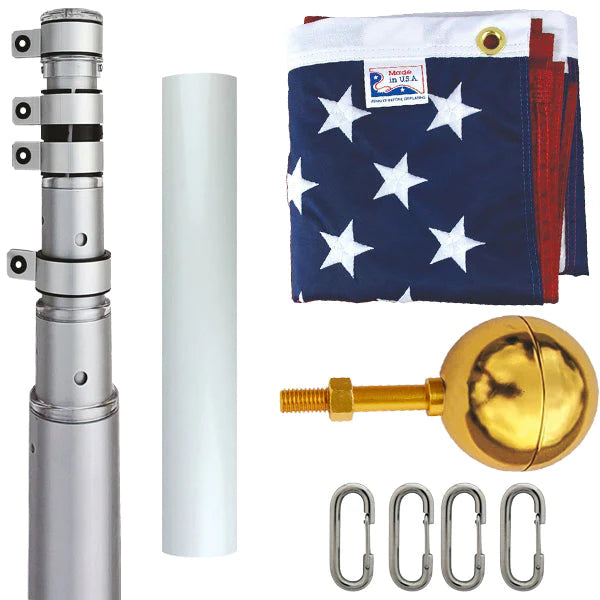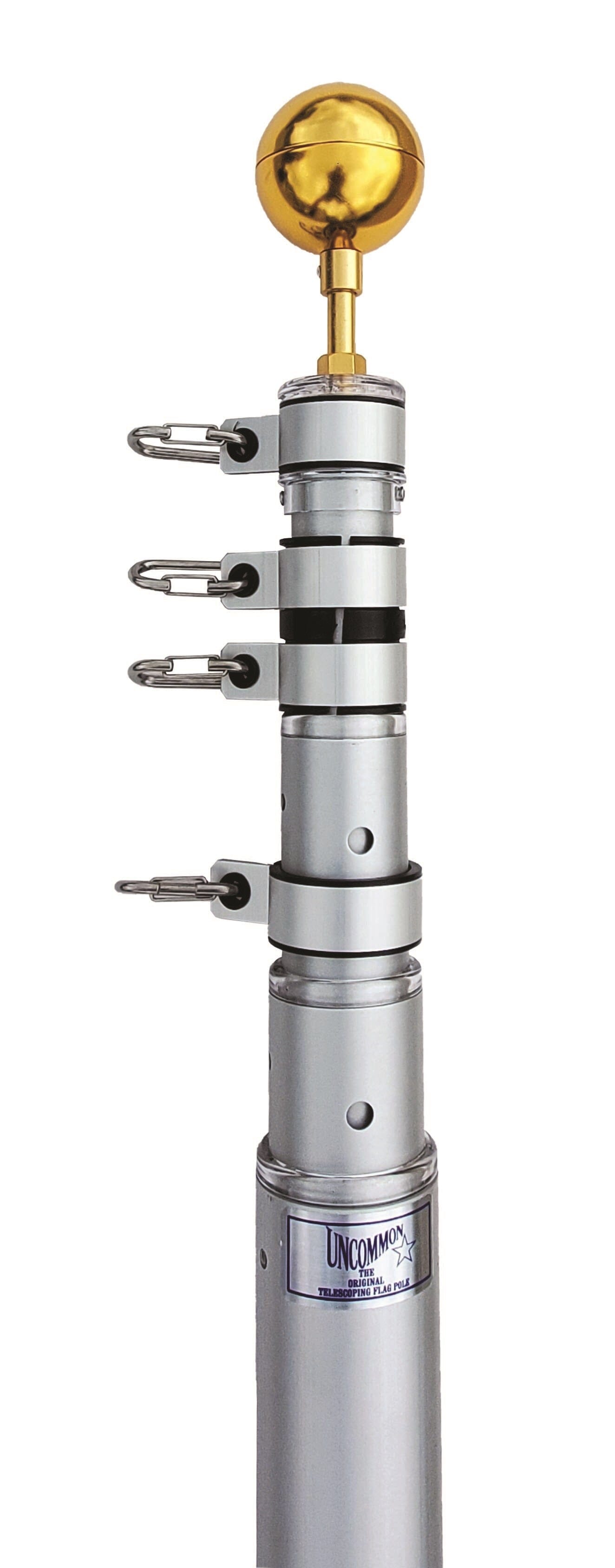When you fly a flag on your business’s site, it can provide a host of advantages that you didn’t enjoy before. In addition to allowing you to show your pride for something you believe in, a flag can enhance the look of your location and attract like-minded customers. However, there are several steps you should not skip over when mounting a flagpole on your property. Fortunately, you can keep track of each one with this checklist for erecting a commercial flagpole.
Research Local Codes About Flagpoles
Before raising a commercial flagpole, familiarize yourself with the local regulations and codes specific to flagpole installations. Doing so will allow you to skip paying fines and avoid enforcement actions.
These codes often limit your flagpole’s height and where you can install it. Sometimes, permits might be necessary, so make sure to consult with your local planning department. Staying in step with the law will lay a sturdy foundation for your project.
Buy a Flagpole With the Appropriate Height and Material
Another important step on this checklist for erecting a commercial flagpole is to purchase one with the appropriate height. Consider the size of your property, the surrounding buildings, and how far away you want people to see your flag. If your flagpole is too short, people may not notice it. Conversely, one that is too tall could make your facility look disproportionate or violate municipal regulations.
You should also consider material. Manufacturers offer flagpoles with different materials, such as aluminum or fiberglass, which contribute differently to durability and visual appeal. When deciding on the height and material, reflect on your business’s image and long-term goals.
Determine if You Have the Skills To Install It
Before installing your commercial flagpole, you should also assess whether you have the skills to do so successfully. Installing a flagpole involves various technical steps, such as digging a proper foundation, assembling components, and ensuring the pole is perfectly vertical.
If you lack experience or confidence in handling those tasks, hire a professional installer who can guarantee a secure and precise installation. Being honest about your limitations can prevent you from making costly mistakes and guarantee a safer installation.
Pick an Area Where People Can See It
Your flagpole’s location will affect its visibility. Choose a place where passersby can see the flag clearly, such as near a main entrance or landscaped area.
Additionally, consider how sunlight will hit the flag throughout the day and how wind patterns might affect its movement.
A well-positioned flagpole serves as a beacon that enhances your property’s profile. It invites admiration and evokes a sense of community pride and engagement.
Confirm You Will Not Obstruct Underground Utilities
In addition to confirming that people will see the flagpole from your chosen location, confirm that no underground utilities run beneath the proposed site. Hitting electrical cables, water lines, or gas pipes during your installation can be very dangerous and disrupt service.
Call 811 to confirm you will dig in a safe place or to have existing utility lines marked. Proper planning prevents accidents, helps you comply with the law, and protects your investment.
Check for Vertical Obstructions
One last thing to assess regarding your location is whether your flagpole will encounter vertical obstructions, such as trees, power lines, and neighboring structures. These could impede the flag’s movement or cause it to become entangled and damaged.
A clear space around and above the flagpole allows the flag to fly freely and maintains the visual integrity of the display. This openness maximizes the flag’s potential as a symbol of pride and identity.
Obtain All of the Tools You Will Need
If you’re performing the installation yourself, then you should gather all necessary tools and materials. Having everything on hand streamlines the process and minimizes delays.
Basic tools include a shovel or post-hole digger for excavation, a level to ensure alignment, and a ladder. Having these within your reach will make installation easier.
Decide if You Want Lighting
People often take down their flags when the sun goes down, but you can leave yours up at night. However, the US Flag Code requires your flag to be well-lit during dark hours.
Consider whether you plan to leave your flag on the pole all day long and are willing to invest in flagpole lights. Solar-powered lights offer an energy-efficient option, while electric spotlights provide consistent illumination and are similarly cost-effective. The right lighting can transform your flag into a focal point, extending its impact around the clock.
Dig an Appropriately Sized Hole
Excavating a hole with the correct dimensions is crucial for the stability of your flagpole. When it comes to the depth of your hole, dig it deep enough to hold your ground sleeve, and add some extra inches for the gravel you will put in the hole.
The width should be at least four times the diameter of the pole’s base. However, you should still consult the manufacturer’s guidelines to determine the precise dimensions for your specific flagpole.
Give Your Cement Adequate Time To Dry
After pouring your cement into the hole, give it sufficient time to cure and harden before proceeding with the installation. Depending on the weather, this process can take one day or more.
Rushing this stage can lead to instability, risking future structural integrity. Patience during curing will provide you with a reliable flagpole anchor for years to come.
Double-Check You Have All Your Flagpole Components
Before assembling the flagpole and completing your installation, double-check that you have all the necessary components. The manufacturer typically provides the pole sections, halyard, cleats, truck, and finial.
Missing parts can cause delays and affect the flagpole’s functionality. Verifying your inventory beforehand will allow you to have a smoother installation process and avoid unforeseen issues down the line.
Evaluate Your Flagpole After Installation
After you finish installing your flagpole, evaluate its alignment and appearance. Check the vertical alignment with a level. Finally, attach the flag and watch to see if it catches the wind appropriately.
A well-installed flagpole enhances your property’s image, projecting professionalism and pride. By following this checklist, you can confidently undertake this project for your business. Liberty Flagpoles can also help guarantee the success of your installation with our high-quality commercial flagpoles. We offer products with external and internal halyards that allow you to raise your flag in your preferred way. Browse our inventory today!









